Jackfruit is like the jack of all trades when it comes to fruit. From starring as a meat substitute in savory recipes to being enjoyed as you would any other tropical fruit, it seems to be able to do it all. But what is it, how do you find it, and then how do you prepare it?
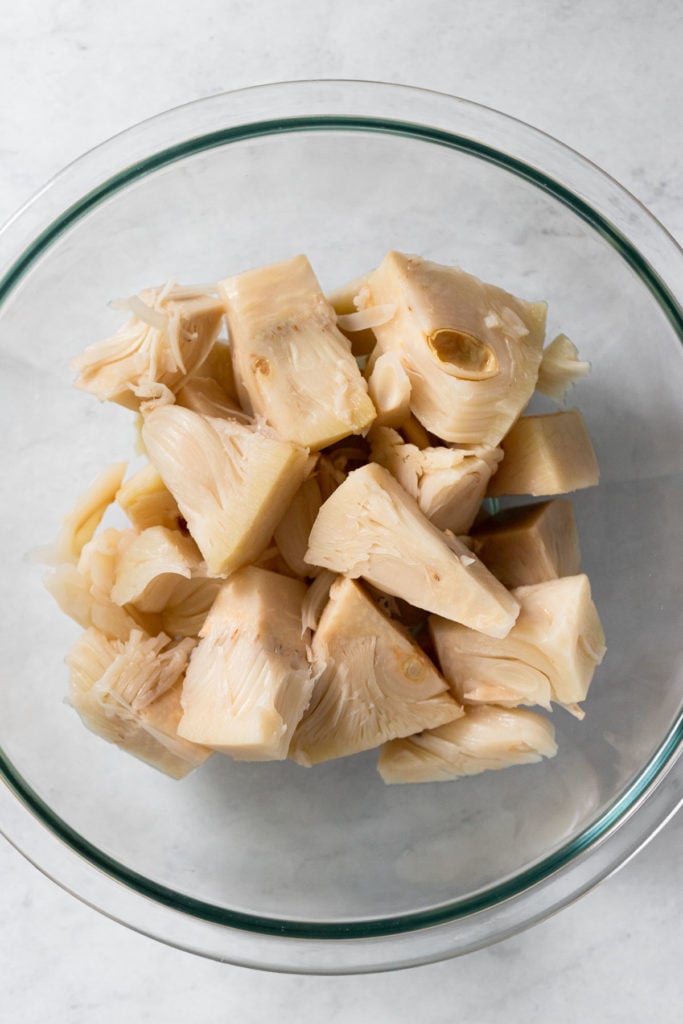
If you are eager to learn more about jackfruit, we’re going to dive into it today so that you feel fully prepared to enjoy this magical fruit in your favorite vegetarian recipes.
Table of Contents
- What is Jackfruit?
- Ripe vs. Unripe Jackfruit
- Is Jackfruit Healthy?
- What Does Jackfruit Taste Like?
- Where to Buy Jackfruit
- How to Prepare Canned Jackfruit
- How to Use Jackfruit
- And that’s a wrap!
What is Jackfruit?
Jackfruit is a fruit that is exclusively grown in Southeast Asia, originating in the region between southern India, Bangladesh, Sri Lanka, the Philippines, Indonesia, and Malaysia.
It is commonly used in South and Southeast Asian cuisines, both ripe and unripe (more on this next!).
It grows on a jack tree, a cousin of the fig tree, and is large, oblong, and has a unique bumpy green exterior. And when we say large…we mean it! Jackfruit is the largest fruit grown on all trees, weighing as much as 120 pounds! It is filled with white to yellowish colored pods that are made up of seeds and have a stringy consistency.
Jackfruit is quickly becoming available, and more popular, in North America in a variety of ways, from canned to frozen, or in packages. Depending on your location, you may be able to find it fresh, too.
Ripe vs. Unripe Jackfruit
Let’s look deeper at the differences between ripe and unripe jackfruit, and when you’ll use each.
Unripe jackfruit, otherwise known as green jackfruit, is very mild in taste with a firmer, meatier texture. This is the variety used in savory dishes, because of its ability to take on whichever flavor you’re cooking with it.
Ripe jackfruit, on the other hand, is sweet, similar to other tropical fruits. It can be compared to a banana and is enjoyed on its own as you would any other tropical fruit, or in sweet dishes, not savory.
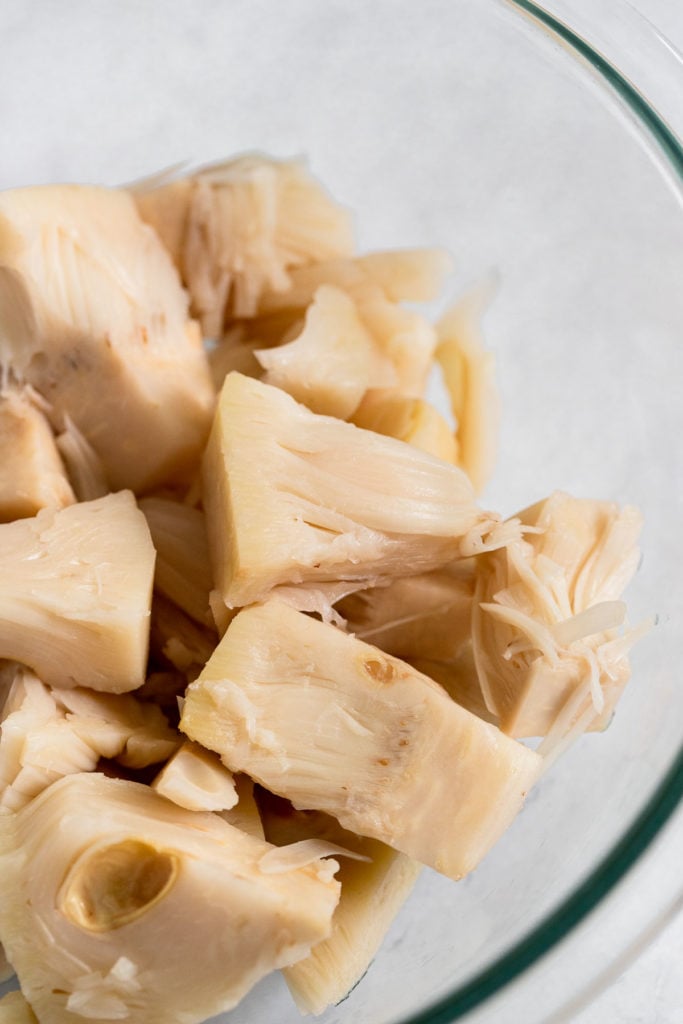
Is Jackfruit Healthy?
I’m definitely not diving into a yes or no answer on this, because healthy is subjective, depending on what you’re looking for, so let’s cover its nutritional properties instead because there definitely are some health benefits of jackfruit.
According to the Cleaveland Clinic, jackfruit is rich in vitamins and contains some fiber, and is low in fat. It comes in at about 95 calories per 100-gram serving, with about 2 grams of protein.
When using jackfruit as a meat substitute, while the texture is very similar, the difference in protein is the biggest thing to keep in mind, as it may not keep you quite as full as other meat substitutes with higher protein amounts. I recommend adding another meat substitute like beans or tofu if you’re looking for more protein.
Jackfruit also contains a whole lot of vitamins, minerals, antioxidants, and phytochemicals (essentially chemicals produced by plants that help your body). These include B vitamins, vitamin C, folic acid, calcium, magnesium, potassium, and many more. It’s also known for some antibacterial, antifungal, and anti-inflammatory components and has been used in ancient medicine for hundreds of years.
Overall, it’s a winner in my book!
Allergic to latex or birch pollen? You’ll want to skip the jackfruit recipes because these allergies can have a cross-reaction with jackfruit. Better to be safe than sorry!
What Does Jackfruit Taste Like?
The inner ‘meat’ of jackfruit is fairly mild in taste, with a slightly sweet hint to it. Because it’s so mild, it takes on the flavor of that which it’s cooked (sauces, spices, etc.).
It’s more the texture – the ability to shred, mimicking the texture of meat – that makes it a great meat substitute. Not necessarily its flavor, although because it’s so mild it will absorb the spices or sauce you cook it in, making it super versatile.
While you can find a whole jackfruit in certain grocers or Asian specialty markets, I recommend starting with canned jackfruit, in water or brine, not syrup. It’s much easier to work with.
Where to Buy Jackfruit
With jackfruit growing in popularity in North America, it’s becoming more common to find in local grocery stores in a variety of ways. While you might be able to find whole, fresh jackfruit in local Asian markets, you’re more likely to find it canned, dried, or prepared in other sauces in ready-to-go meals.
I highly recommend using canned jackfruit for most meat-substitute recipes you’ll find. Look for canned young green jackfruit in water or brine (not syrup!) for savory recipes. Here are some specific places I’ve found canned jackfruit:
- Trader Joe’s
- Specialty health-food stores or co-ops
- Amazon
- Whole Foods
- Asian Market
- Thrive Market
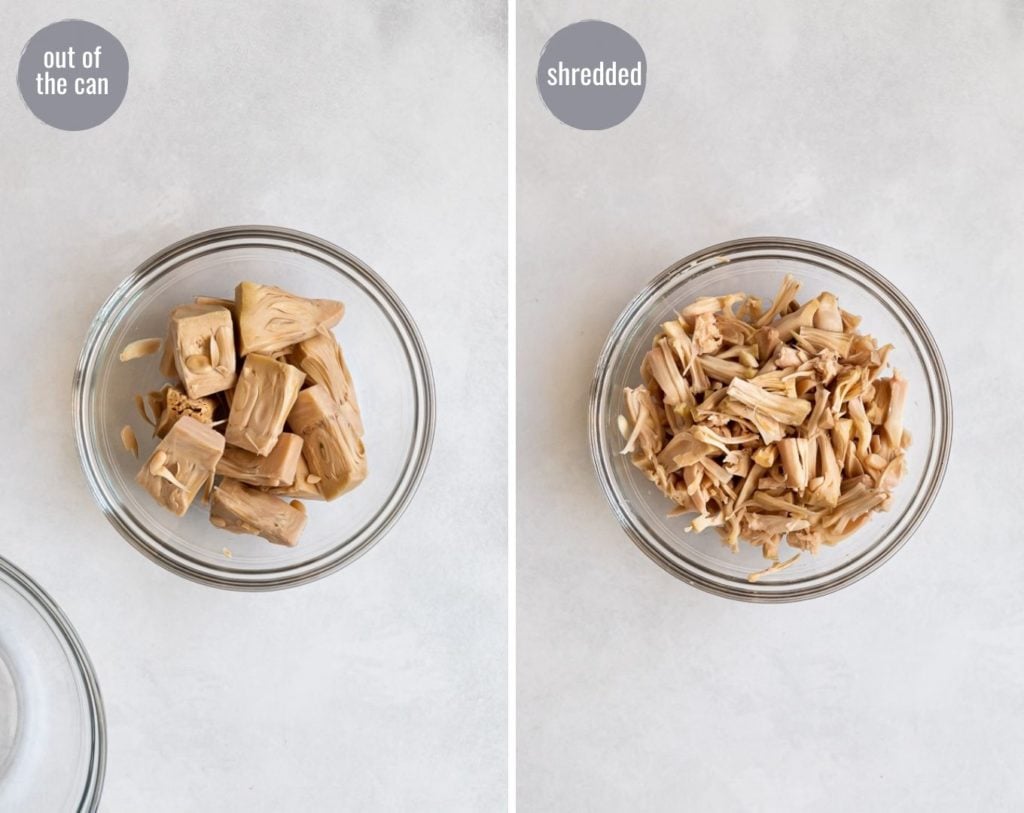
Side note: I have found that Trader Joe’s canned jackfruit has a softer texture than Native Forest’s canned jackfruit (the two brands I am able to find most frequently). This is totally ok, just take note that the shreds, if softer, have a tendency to become a little more mush than a more firm variety, so be careful to not overcook them.
How to Prepare Canned Jackfruit
I don’t have experience cutting or preparing fresh jackfruit, and since here on FITK we’re using canned jackfruit for our recipes, I’m going to cover how to prepare canned jackfruit today.
It’s important to say again: find young green jackfruit in a can that’s packed in water or brine, not syrup for savory recipes. If it’s in syrup, it’s gonna be sweet.
Canned jackfruit will be in triangle-like pieces, most with a thick base, and a shreddable top portion. Some pieces will contain large seeds that look similar to Brazil nuts.
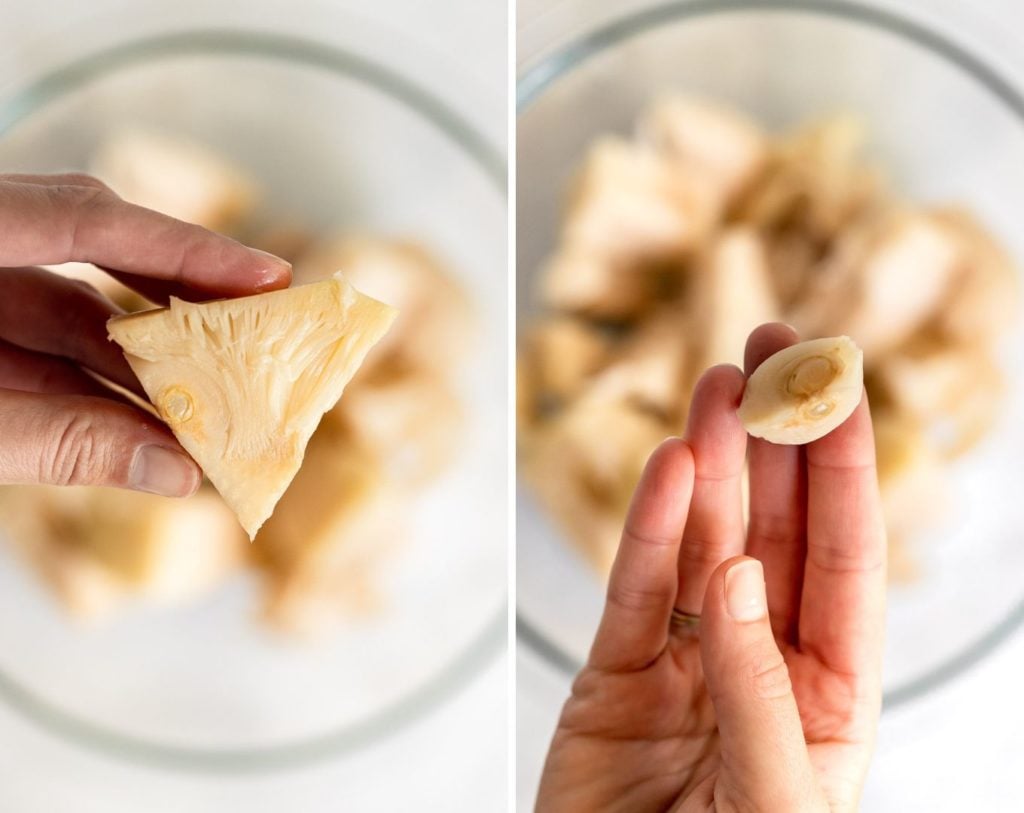
Start by draining the jackfruit pieces and then rinse the pieces using a fine mesh strainer. Once they’re drained and rinsed, it’s time to begin shredding them by hand.
I find it easiest to just grab a piece of jackfruit, remove the thick base, and peel apart the shredded top. Some recommend saving the seeds and base part to finely chop and add back in later. I definitely take the lazy approach and have had no issues doing so. I simply break apart the base in my hand, too, and leave the seeds.
With fresh jackfruit, you would have to remove and prepare the seeds separately, however, because these are canned and have been cooked in the canning process, there’s not really a need to here.
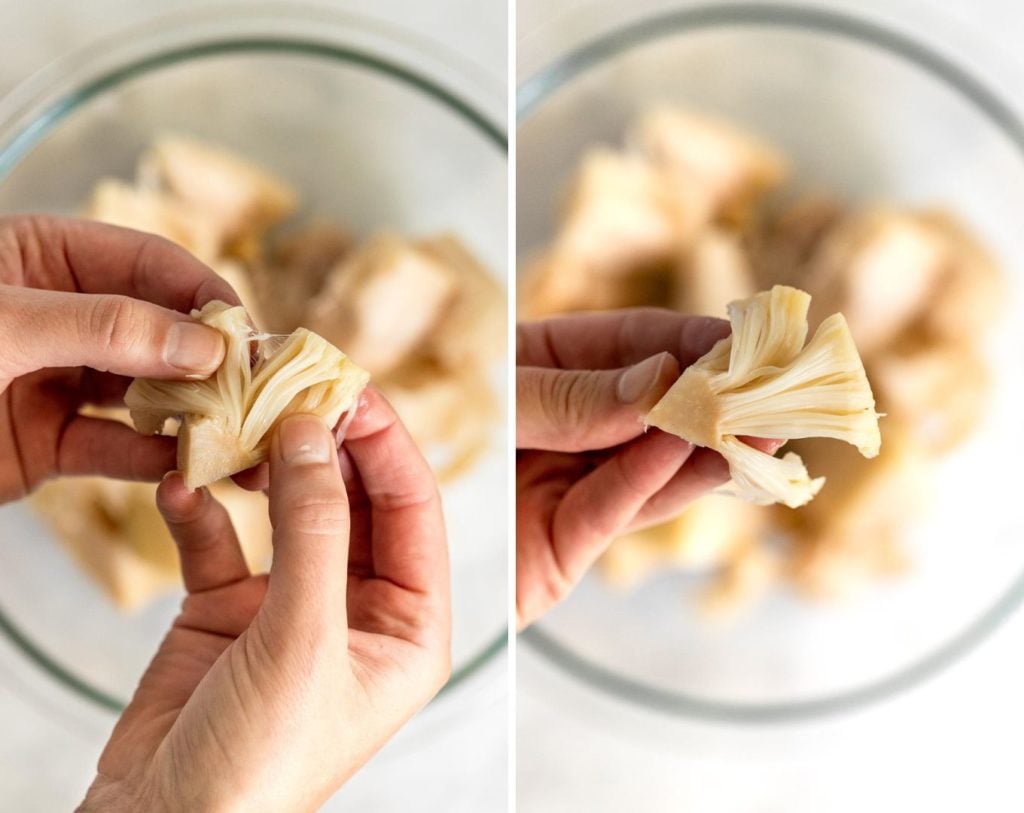
Alternatively, you can use two forks to shred the jackfruit pieces, but honestly, I find the ‘hand method’ is the quickest way to get it shredded. For some recipes, you can even place the jackfruit pieces in a skillet and break them apart using a spoon, too.
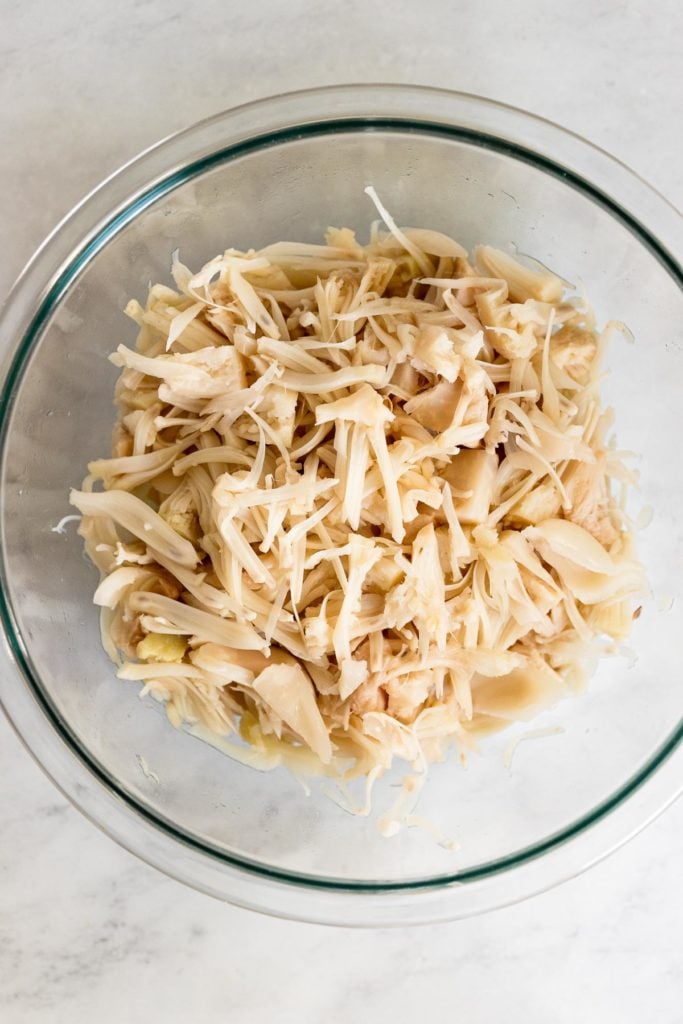
How to Use Jackfruit
If it wasn’t already abundantly clear, unripe jackfruit is perfect as a meat substitute in savory recipes for its hearty, shredded, meat-like texture and its essentially flavorless taste to soak up whatever spices you’re using.
Once it’s prepared, it doesn’t need much to cook, you basically just need to heat it with spices or a sauce, and enjoy. It’s wonderful in curries, stir-frys, tacos, sandwiches, and more. Here are a few of my favorite jackfruit recipes:
- Teriyaki Jackfruit Lettuce Wraps
- Vegetarian Buffalo Dip
- Jackfruit Tacos with Black Beans
- Added to Vegetarian Tortilla Soup (in place of chicken)
- BBQ Sandwiches with barbeque sauce (like pulled pork)
- Jackfruit Carnitas
- In burritos or enchiladas
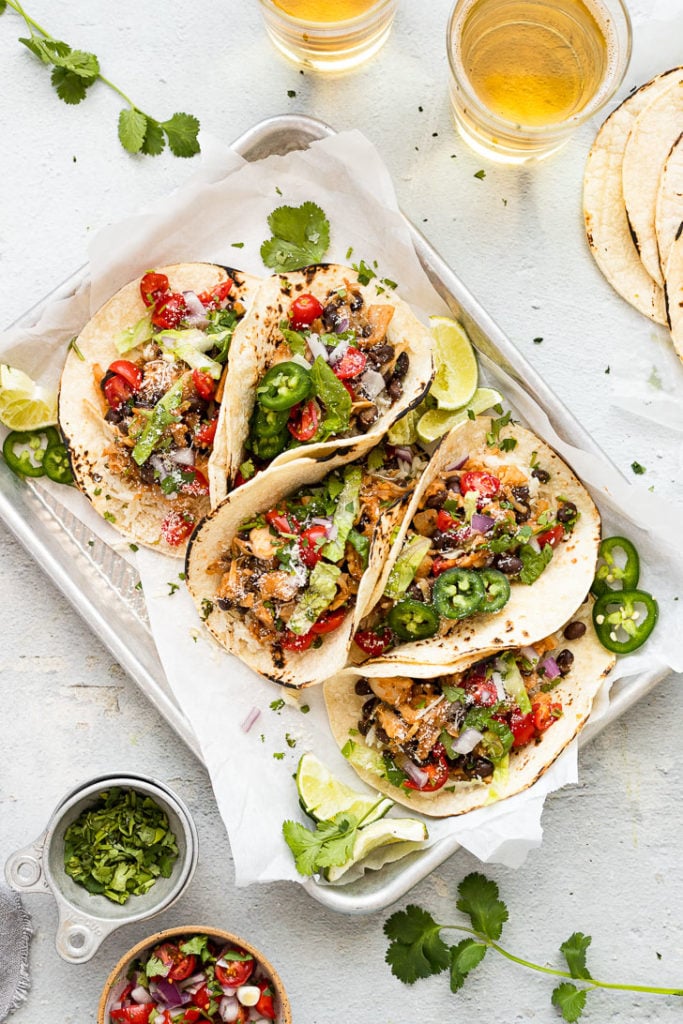
And that’s a wrap!
As you can see, jackfruit is a wonderful way to enjoy more meatless meals and is super versatile when it comes to the recipes you can use with it. It’s less processed than other plant-based meat alternatives and can be more sustainable.
It’s one more ingredient to enjoy in your home to add variety to meals and your diet. Don’t forget that you’re looking for unripe, green jackfruit for savory recipes, but why not give sweet jackfruit a try as a tasty snack, too?! Be sure to let us know in the comments if you give it a try!
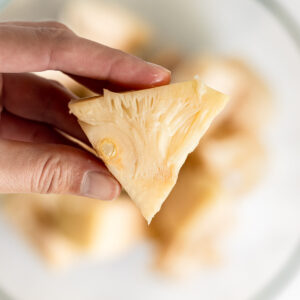
Get the Recipe How to Prepare Jackfruit
Ingredients
- 20 ounces canned young green jackfruit, in brine, not syrup
Instructions
- Drain the jackfruit pieces in a colander, then rinse with water to remove any excess salt from the brine, etc.
- Take a piece of the jackfruit in your hand and remove the thick base. You can either chop or break the base apart using your fingers if desired. Depending on your recipe, you can also leave it whole.
- Take the top part that looks like it will shred apart, and shred it between your fingers. Place all of the parts in a bowl and continue shredding the remaining pieces.
- Seeds: you can either chop the seeds and add them to the shredded mixture or just toss them in as they are. They are soft and you won't even notice the whole seeds in the recipe.
- Once the jackfruit is shredded, heat with spices on the stovetop, or heat and toss with your favorite sauce. See additional recipe ideas above in the post.

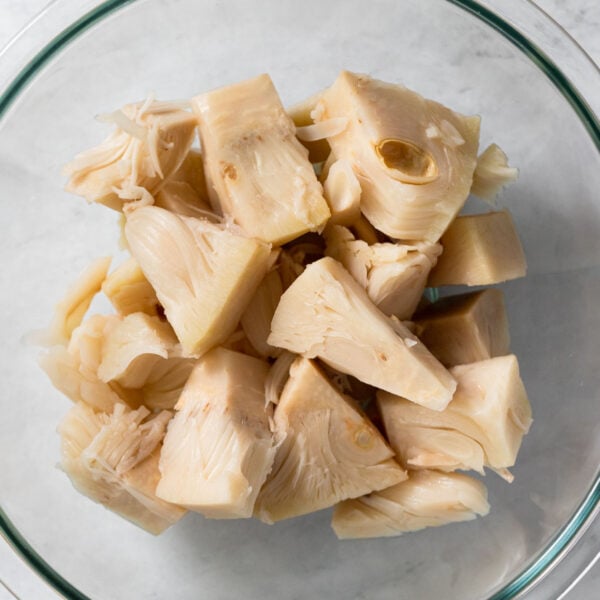




My sister and I made a pizza casserole full of veggies and added a can of jackfruit. I hadn’t had it before. The casserole was great!
That sounds delicious! Thanks so much for sharing, Julie. I’m glad you gave it a try 🙂